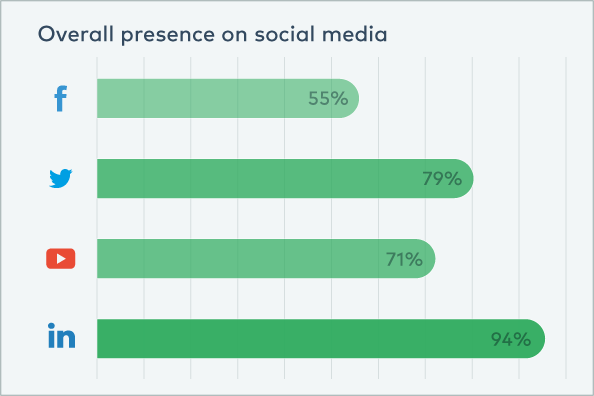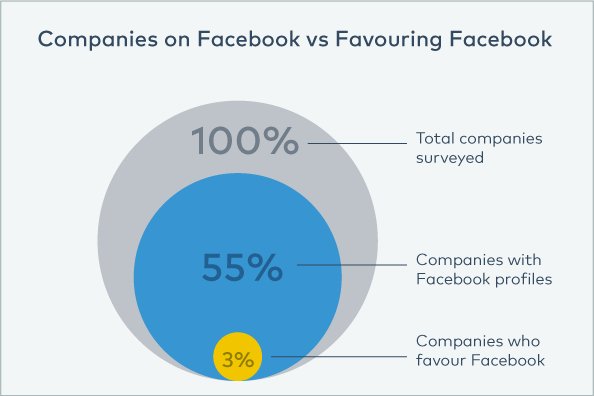Our aims in compiling this study were multifaceted. Namely, we hoped to find out answers to the following 10 questions:
When it comes to effective digital marketing, size does not matter – nor does heritage. Smaller asset managers were more than capable of competing with their larger counterparts. Although all managers used incredibly similar language to describe their business, there wasn’t any correlation between ‘generic’ language and a reduced digital profile: use of language does not matter technically, but a company’s presence on various channels does.
Those managers that embraced video content (particularly YouTube) and posted this content across their website did very well on digital presence and investor interaction. Focusing on original content that is educational in nature – as opposed to product promotion – helped managers raise their overall digital presence score.
All of the companies in the study had a website, however, overall presence on social media was varied:

Please enter your details on the right to read the full results...
It is notable that half of the companies were on Facebook (56%), but only 3% favoured using it, even though half of those on it posted on a regular basis. Approximately a third of the companies correctly have a balance across all digital channels.

Those companies that are either balanced across all channels or favour YouTube have the highest digital presence score overall. Those that favour YouTube have a higher score than even balanced companies. This hints at the importance of video in engaging with investors.
Please enter your details on the right to read our full analysis...
The overall significance of our study shows that the art of improving a company’s digital profile is not necessarily the domain of the new brand: asset managers with centuries’ old heritage are just as able to integrate digital marketing as part of their communications strategy as those launched in the 21st century.
It appears that many of the companies that are trying to master their digital presence – almost all of those listed in this report – are doing so in a haphazard fashion. If a manager has an existing presence on social media, it should be utilizing it or abandoning it, not letting it languish. If it is using more than one channel, they need to be integrated – not just with each other but also with its website and marketing content.
Please enter your details on the right to view our comprehensive conclusion...